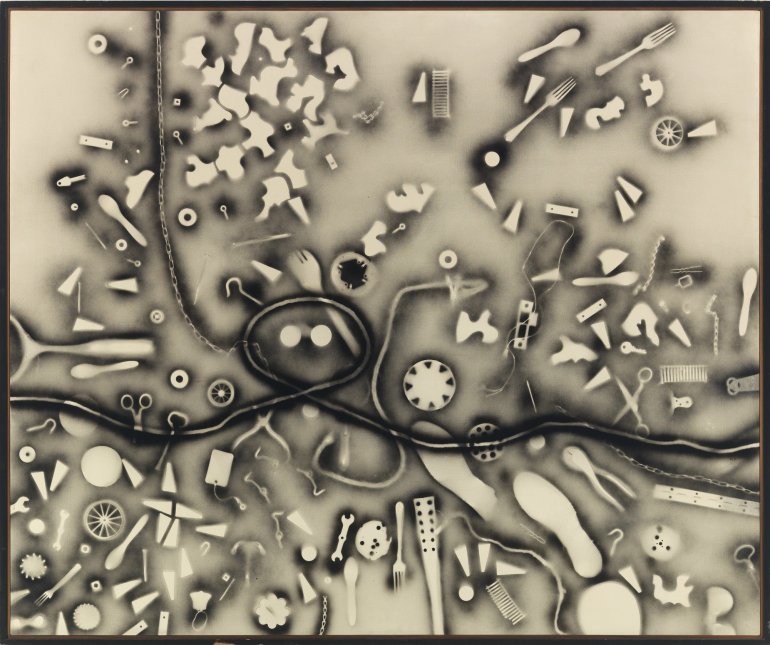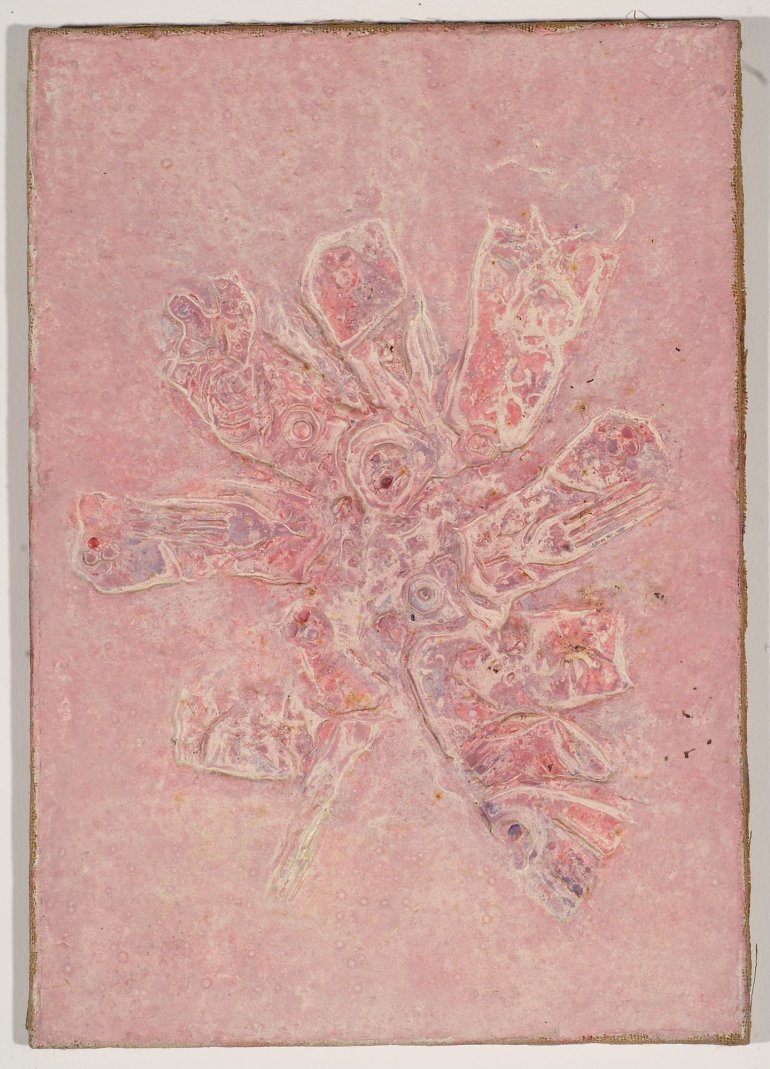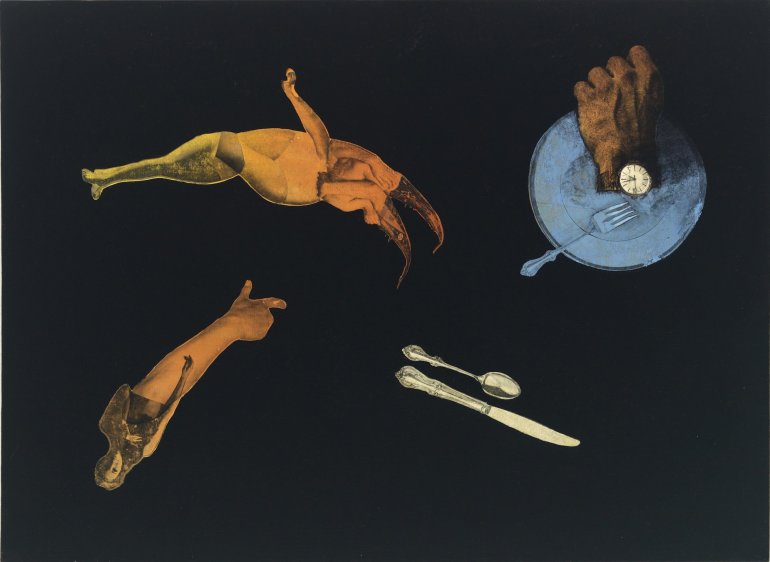Limp Voyeur in a Humid Landscape: Dominick Di Meo 27 Feb - 13 Apr 2013 11 Duke Street, St James's
George Carlin once said that the best laughter is forbidden laughter - like when you're kneeling over the casket. Something strikes you as funny, wickedly funny, but you know it shouldn't be. Dark humor. Black Humor. Gallows humor. Sniggering in the face of a dire situation. Dominick Di Meo's work embraces these contradictory energies. In the 1950s, as part of the group of Chicago painters and sculptors now known as the 'Monster Roster', he was at home making images of ontological angst and gawping terror. Di Meo was roommates with Leon Golub, chief ringleader of the Roster and no stranger to the dark side. Di Meo's work was as fraught as that of Golub, Nancy Spero, June Leaf, or Seymour Rosofsky. Indeed, he comes by the bleakness honestly.
Cut to scenes of a young child in a polio ward, watching baby body-bags paraded past him by adults who didn't figure a kid would understand. No wonder Di Meo felt at home channeling Dubuffet, Fautrier, Giacometti and other old-world masters of existential art. But as he grew into his own distinct artistic persona in the early 1960s, an evil sense of humor began to sneak into his work, a humor often aimed at himself, his physical body. A group of remarkable reliefs that he made in Italy from 1961 to 1963 features disembodied arms, floating in an atmosphere, cavorting with starfish, sometimes replaced by a fork or wizened to near bone.
Drawings from the same period often utilize rubbings, sometimes from the wood of his studio floor or license plates, sometimes from his own reliefs. Cartoonish heads are misshapen, bleak, blank, quizzical, but rich with detail and buzzing with vortical motion. Whatever ink he used on these is so dark it's blacker than black, a terminal black, eating light and spitting out void. By the time he moved to New York in 1968, Di Meo was using a transfer technique he discovered to appropriate photographic images for his canvases. These are perhaps lighter in tone, less dire, but still as perverse. Torsoscape, for instance, sits a tiny head atop a landscape/body, the horizon made into big shoulders. Limp Voyeur in a Humid Landscape buries a squiggly figure in a field of stenciled objects, the moisture oppressive and manifest. In one small canvas, structured much like Torsoscape, Di Meo swaps in his own face atop the pile, a mirror image at the bottom, separated by a rope wrapped around the painting. It's like he's looking into the water, narcissus literally bound to an image of his own limbless physique, at once self-deprecatingly jovial and deeply claustrophobic.
- John Corbett
Dominick Di Meo was born in Niagara Falls, NY, in 1927. He lived and worked in Chicago until 1968, when he moved to New York City, where he has resided since. Di Meo showed extensively from the 1950s until the 1970s, though he largely withdrew from public exhibition in the 1980s. Limp Voyeur In a Humid Landscape represents the first survey of his work outside of the United States.
Limp Voyeur in a Humid Landscape: Domini ck Di Meo Is the third collaboration between Thomas Dane Gallery and Corbett vs Dempsey, Chicago
A catalogue will accompany the exhibition.
For press inquiries please contact Meredith@suttonpr.com
For exhibition and sales inquiries please contact Francois Chantala at the Gallery Francois@thomasdane.com
Visitor Information:
Exhibition Dates: 27 February 2013- 13 April 2013
Gal lery Hours: Tuesday to Saturday 10:00am-6:00pm or by appointment
Admission: Free
Tel: + 44(0)20 7925 2505
Nearest Tube: Green Park or Piccadilly

Dominick Di Meo
Limp Voyeur in a Humid Landscape, 1965
AFA label on reverse: “Fantasy & Figure”
Synthetic polymer on canvas
127 x 152.4 cm., 50 x 60 in.

Dominick Di Meo
Study for a Used Deck of Cards (Queen of Clubs), 1974
Acrylic, synthetic polymer, and cord on canvas
71.1 x 50.8 cm., 28 x 20 in.
(TDA03314)

Dominick Di Meo
Kabuki, 1962
Plastic and water-based pigment on hemp
50.8 x 35.6 cm., 20 x 14 1/8 in.
(TDA03319)






